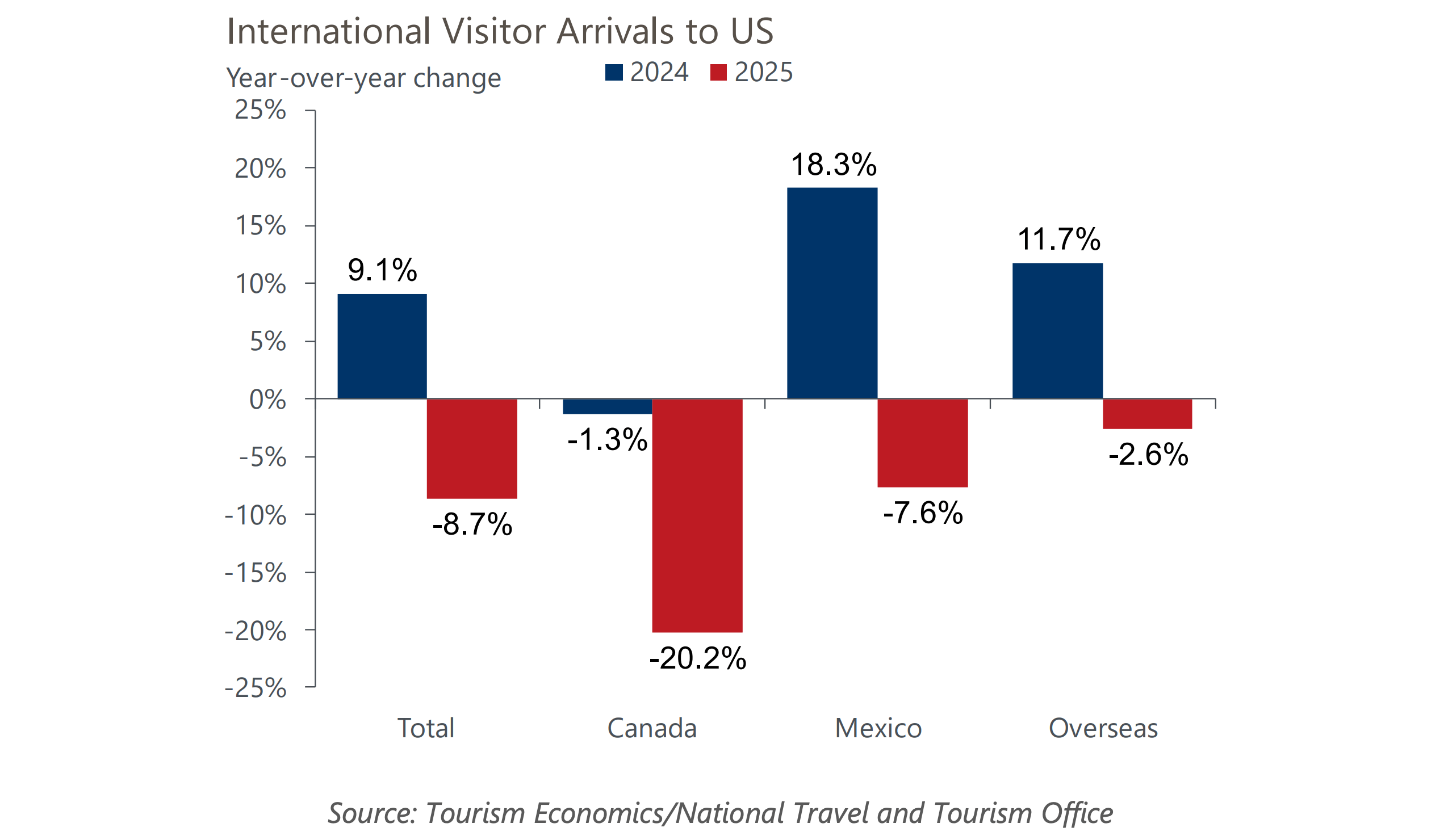Research Briefing
21 May 2025
Negative Outlook for US Inbound Travel Hasn’t Budged
Various headwinds continue to fuel declines in inbound travel to the US.
The negative outlook for inbound travel to the US remains. Travelers make choices: where and when to travel, when to book, and how long to stay. Perceptions of the US impact these decisions.
- Sentiment headwinds are negatively impacting US inbound travel. We expect a decline of 8.7% in US international arrivals for the year overall (compared to a 9.4% decline in our March forecast).
- Factors contributing to the negative outlook include Trump administration posturing and policy announcements, such as ‘Liberation Day’ tariffs across long-standing trade partners. Media coverage of border security incidents and national travel advisories also poses risks.
- Visitation from Canada (-20.2%) and Western Europe (-5.8%) show the sharpest declines. We forecast international visitor spending to fall by $8.5 billion (-4.7%), relative to last year.
- Findings show a pullback in Canadian travel to the US, with a 35.2% April decline among Canadian land visitors returning from trips to the US and a corresponding 19.9% drop in air visitors.
- During March and April combined, inbound travel to the US from overseas origins (international minus Canada and Mexico) declined 1.6% compared to last year. Easter timing impacted the suppression of arrivals in March (-11.6%) and boosted arrivals in April (8.0%).
- Air bookings as of April show continued weakness. 10.8% fewer flights have been booked to the US for the May to July period than at the same point last year.
To keep up with the latest in the US travel economy, subscribe to our monthly newsletter.

You might also be interested in
Tags:
Download Report Now
[autopilot_shortcode]

